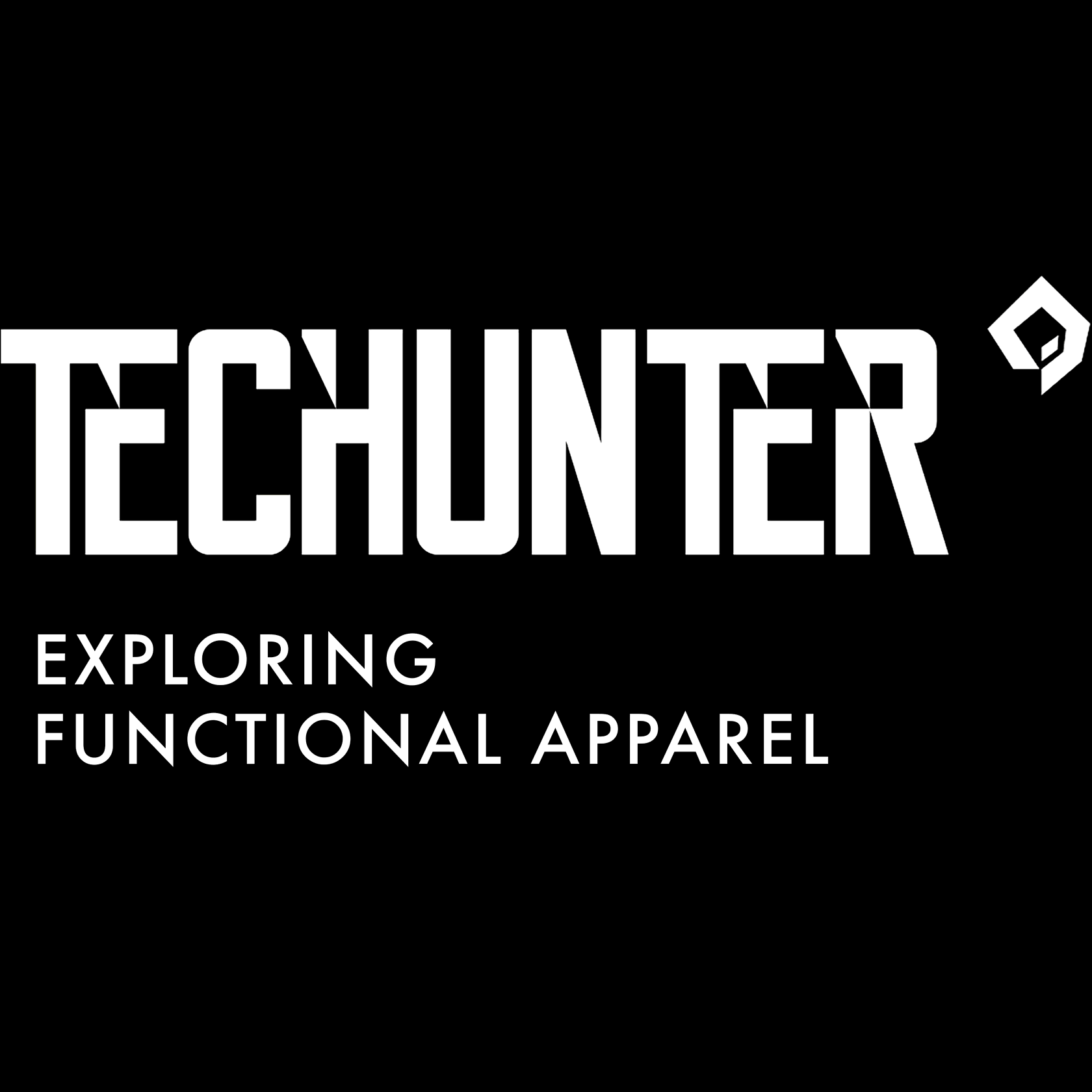
DEMON: Dark Lord's
Favourite Hikers
[Interview]
Favourite Hikers
[Interview]
Founded in 1963 in Montebelluna, Italy, by Girolamo Deon, the project today impresses with its unapologetic vision and masterful craftsmanship. Led by the third generation of the family, it is spearheaded by the art direction of Alberto Deon, who we were lucky to catch in Milan. We talked about TikTok and architecture, how Alberto perceives current day fashion and the dualism of running a brand.
DEMON: Dark Lord's
Favourite Hikers [Interview]
Favourite Hikers [Interview]
Founded in 1963 in Montebelluna, Italy, by Girolamo Deon, the project today impresses with its unapologetic vision and masterful craftsmanship. Led by the third generation of the family, it is spearheaded by the art direction of Alberto Deon, who we were lucky to catch in Milan. We talked about TikTok and architecture, how Alberto perceives current day fashion and the dualism of running a brand.



[Hi, Alberto! As we know your brand's story, DEMON was founded in 1963, made a temporary break in 2004, and then in 2018 you "exhumed" it with a new design and concept direction. But can we please dive deep into your personal background as a designer and art director before this re-launch, and how it all came to this step in 2018?]
Alberto Deon: Before delving into this project I attended architecture education between Milan and London.
The project DEMON started out as a playful experiment and grew organically into what it is today.
I'd say that not having studied fashion I was able to pursue this project in an unbiased way, not conditioned by certain rules that regiment the industry which I'm currently a part of.
Alberto Deon: Before delving into this project I attended architecture education between Milan and London.
The project DEMON started out as a playful experiment and grew organically into what it is today.
I'd say that not having studied fashion I was able to pursue this project in an unbiased way, not conditioned by certain rules that regiment the industry which I'm currently a part of.
[How does DEMON operate? Knowing that you are still trying to keep the craftsmanship, local traditions and heritage aspect of its production, at the same time pushing the technical level of products and not following trends and seasonal race – how difficult is that?]
The scope of the project is zeitgeist related rather than seasonal. By that meaning, we aspire to represent an all-encompassing shift in sensitivity rather than catching the wave of the trend, of the moment. I think the minute someone comes up with a shibboleth or a trend naming, that specific trend or movement starts its decline. That is also the case with Gorpcore, from which I mostly want to take the idea of an emerging form of tourism, revolving, much more than before, around embracing a certain relationship with fatigue, nature, one's own body and its limits. Sifting through the hype, I believe that's the type of content that this trend brought to the table, along with a proportional taste for sportswear-inspired garments.
The scope of the project is zeitgeist related rather than seasonal. By that meaning, we aspire to represent an all-encompassing shift in sensitivity rather than catching the wave of the trend, of the moment. I think the minute someone comes up with a shibboleth or a trend naming, that specific trend or movement starts its decline. That is also the case with Gorpcore, from which I mostly want to take the idea of an emerging form of tourism, revolving, much more than before, around embracing a certain relationship with fatigue, nature, one's own body and its limits. Sifting through the hype, I believe that's the type of content that this trend brought to the table, along with a proportional taste for sportswear-inspired garments.
[We're so fascinated by the construction and fabrics you choose for your shoes. Can you describe the material selection: what you like to use, and something that is hard to implement now, but you would like to work with? Any specific or rare fabrics, such as graphene, or ingredient brands like Dyneema, X-PAC, etc?]
The sorting of our materials is equally revolving on performance-based garments, likewise ICE33, PUTEK, Ripstop, CORDURA, Dyneema, eFoam, and sheer aesthetics, ig Kalgan fur or "Quartz", a mottled overlap of suede and reflective treatments.
We are exploring a wide syntax of possibilities and combinations in the world of materials, which are indeed going to be a defining step in the construction of our identity as DEMON.
The sorting of our materials is equally revolving on performance-based garments, likewise ICE33, PUTEK, Ripstop, CORDURA, Dyneema, eFoam, and sheer aesthetics, ig Kalgan fur or "Quartz", a mottled overlap of suede and reflective treatments.
We are exploring a wide syntax of possibilities and combinations in the world of materials, which are indeed going to be a defining step in the construction of our identity as DEMON.
[The sole construction of boots requires development of a certain walking habit. Can you please describe the essence of that sole, your personal feelings, and what you put into it?]
As of right now the singularity of the construction process of the sole, and the double lasting e-Foam protection binding, has been one the hardest processes to industrialize. We are now in the midst of patenting it, just to give you an idea of the amount of research and experimentation behind it. I think this sole yields a whole different vibe to the project: it's not just our "signature box sole", because it is a defining design detail that interacts with the whole of the shoe, up to the upper and to the laces layout.
The shoes do come with a peculiar walking habit: I wanted the sole to have a stiff, hull-like presence that resembles the walk of a ski boot.
As of right now the singularity of the construction process of the sole, and the double lasting e-Foam protection binding, has been one the hardest processes to industrialize. We are now in the midst of patenting it, just to give you an idea of the amount of research and experimentation behind it. I think this sole yields a whole different vibe to the project: it's not just our "signature box sole", because it is a defining design detail that interacts with the whole of the shoe, up to the upper and to the laces layout.
The shoes do come with a peculiar walking habit: I wanted the sole to have a stiff, hull-like presence that resembles the walk of a ski boot.









[One more fascinating thing about DEMON is your visual identity, graphic applications, and the approach to the media presence. Can you explain its graphic references and background? How do you feel it's important for your brand's representation?]
Absolutely. In a world that is overloaded with visual information, it is crucial to harvest your own maniera in communicating. For me it's always been a very natural process; product design and visual design go hand in hand into generating a water-tight bond, and ultimately the relationship between these two is what for me constitutes a brand.
Although I'd say that in our generations (millennials and gen z) what's more frequently missing is the actual capacity to come up with astounding products, with well resolved detailings and manufacturing. I find that for a lot of us internet-savvy, we tend to be more effective in communicating a product in the digital realm rather than curating the product itself.
Absolutely. In a world that is overloaded with visual information, it is crucial to harvest your own maniera in communicating. For me it's always been a very natural process; product design and visual design go hand in hand into generating a water-tight bond, and ultimately the relationship between these two is what for me constitutes a brand.
Although I'd say that in our generations (millennials and gen z) what's more frequently missing is the actual capacity to come up with astounding products, with well resolved detailings and manufacturing. I find that for a lot of us internet-savvy, we tend to be more effective in communicating a product in the digital realm rather than curating the product itself.
[As a media about functional clothing, we are trying to maintain this balance between the form and function in our content production. Sometimes we see that it's hard for brands to keep the high quality of both sides in their work. We see DEMON as a good example of how to keep it on a very high level. What are your instruments for keeping that balance between fashion and technical? Would you advise anything for art directors on that theme?]
The scope of DEMON is exploring internet-informed references on the one hand, and analogical/artisanal methods of constructing a product on the other.
This dualism is really the key for me in orchestrating a project today. Without a proper (obsessive) care for the analogical sides, the product becomes a bi-dimensional chrysalide that never outgrows the screen behind which it is being scrolled through, liked, dmed, saved etc.
The scope of DEMON is exploring internet-informed references on the one hand, and analogical/artisanal methods of constructing a product on the other.
This dualism is really the key for me in orchestrating a project today. Without a proper (obsessive) care for the analogical sides, the product becomes a bi-dimensional chrysalide that never outgrows the screen behind which it is being scrolled through, liked, dmed, saved etc.
[Your latest installation with Marc Leschelier was a great example of how fashion and architecture can interact. Your shoes actually look like pieces of art, if you put them on a pedestal. Do you see the strong connection of DEMON with the interior, graphic, or architectural design?]
I believe there is a strong affinity between Marc's language and DEMON's aesthetics. His art investigates the semantics of construction materials. It isolates a state of the construction process, almost freezing it and ostracizing it from the potential state of architecture.
I personally try to explore the "off white" area between products of use, thus industrial design and objectified free form, which is purely artistic.
I believe there is a strong affinity between Marc's language and DEMON's aesthetics. His art investigates the semantics of construction materials. It isolates a state of the construction process, almost freezing it and ostracizing it from the potential state of architecture.
I personally try to explore the "off white" area between products of use, thus industrial design and objectified free form, which is purely artistic.
[Brands and designers are always trying to experiment, push the boundaries, try new directions. Can we expect some DEMON ventures, for example, in the apparel segment? ]
I want to see DEMON as a cauldron for my creativity, there is no real boundary.
Products are but vehicles of an overarching manifesto.
I want to see DEMON as a cauldron for my creativity, there is no real boundary.
Products are but vehicles of an overarching manifesto.
[Your latest installation with Marc Leschelier was a great example of how fashion and architecture can interact. Your shoes actually look like pieces of art, if you put them on a pedestal. Do you see the strong connection of DEMON with the interior, graphic, or architectural design?]
I believe there is a strong affinity between Marc's language and DEMON's aesthetics. His art investigates the semantics of construction materials. It isolates a state of the construction process, almost freezing it and ostracizing it from the potential state of architecture.
I personally try to explore the "off white" area between products of use, thus industrial design and objectified free form, which is purely artistic.
I believe there is a strong affinity between Marc's language and DEMON's aesthetics. His art investigates the semantics of construction materials. It isolates a state of the construction process, almost freezing it and ostracizing it from the potential state of architecture.
I personally try to explore the "off white" area between products of use, thus industrial design and objectified free form, which is purely artistic.
[Brands and designers are always trying to experiment, push the boundaries, try new directions. Can we expect some DEMON ventures, for example, in the apparel segment? ]
I want to see DEMON as a cauldron for my creativity, there is no real boundary.
Products are but vehicles of an overarching manifesto.
I want to see DEMON as a cauldron for my creativity, there is no real boundary.
Products are but vehicles of an overarching manifesto.
[Even while many in the larger media space refer to over-consuming, sustainability, etc, in a populist manner, you, as a niche independent brand/designer, can speak freely about what you are bothered by. And we, as a niche and independent media can support that and give you a voice. So what problems do you think the industry has from your point of view? ]
One thing I am questioning myself about is whether there are social elevators in fashion anymore.
I'm not sure a small brand in this day and age can leverage its position to the point of becoming a new Prada, or Vuitton, or Gucci.
Perhaps this has to do with the plateau of consumerism in the west, or the fact that capitalism is constructed in such a way that allows corporations to gobble up products and ideas or hire creative directors before their communities are big enough to permit an independent growth.
One thing I am questioning myself about is whether there are social elevators in fashion anymore.
I'm not sure a small brand in this day and age can leverage its position to the point of becoming a new Prada, or Vuitton, or Gucci.
Perhaps this has to do with the plateau of consumerism in the west, or the fact that capitalism is constructed in such a way that allows corporations to gobble up products and ideas or hire creative directors before their communities are big enough to permit an independent growth.
[With the new trends pumping up so fast, with TikTok and its clip thinking, even the Gorpcore trend's apex of today – the overall level of quality is degrading and leveling out, be it content, products, ideas etc. Complexity, exploration, and craftsmanship is not there anymore, in comparison to what it was. What are your thoughts on that? Is it an actual problem, do you see it for yourself?]
I believe TikTok, Instagram, Reddit and all trending social media alike to be vessels of an overarching culture which is the Internet culture. Undoubtedly these media are introducing a new level of freshness and immediacy in communication, and so the challenge will be to use these types of media in service of our purposes. It's crucial to never dwell in the past when it comes to these new thresholds, rather look for ways to implement the current state.
"You never change things by fighting the existing reality.
To change something, build a new model that makes the existing model obsolete".
― Buckminster Fuller, American architect, systems theorist, author, designer, inventor, philosopher, and futurist.
I believe TikTok, Instagram, Reddit and all trending social media alike to be vessels of an overarching culture which is the Internet culture. Undoubtedly these media are introducing a new level of freshness and immediacy in communication, and so the challenge will be to use these types of media in service of our purposes. It's crucial to never dwell in the past when it comes to these new thresholds, rather look for ways to implement the current state.
"You never change things by fighting the existing reality.
To change something, build a new model that makes the existing model obsolete".
― Buckminster Fuller, American architect, systems theorist, author, designer, inventor, philosopher, and futurist.
[Could you please share with us your main design/ architecture/ fashion references, aye brands/ studios/ people?]
In architecture I'd say Carlo Scarpa. It's quite reductive to call him an architect as he's got more in common with a jewelry designer. In design I would say Formafantasma, I love their ability to build narratives from the ground up and associate them with astounding taste. For fashion I'd say Rick Owens, Craig Green, A Cold Wall.
In architecture I'd say Carlo Scarpa. It's quite reductive to call him an architect as he's got more in common with a jewelry designer. In design I would say Formafantasma, I love their ability to build narratives from the ground up and associate them with astounding taste. For fashion I'd say Rick Owens, Craig Green, A Cold Wall.
[What's the future for DEMON? Any upcoming new silhouettes, activities, and projects you want to share?]
We have a ton of new colorways and executions for Poyana and Carbonaz being released within the next few months.
And also 2 new models.
We have a ton of new colorways and executions for Poyana and Carbonaz being released within the next few months.
And also 2 new models.
[Could you please share with us your main design/ architecture/ fashion references, aye brands/ studios/ people?]
In architecture I'd say Carlo Scarpa. It's quite reductive to call him an architect as he's got more in common with a jewelry designer. In design I would say Formafantasma, I love their ability to build narratives from the ground up and associate them with astounding taste. For fashion I'd say Rick Owens, Craig Green, A Cold Wall.
In architecture I'd say Carlo Scarpa. It's quite reductive to call him an architect as he's got more in common with a jewelry designer. In design I would say Formafantasma, I love their ability to build narratives from the ground up and associate them with astounding taste. For fashion I'd say Rick Owens, Craig Green, A Cold Wall.
[What's the future for DEMON? Any upcoming new silhouettes, activities, and projects you want to share?]
We have a ton of new colorways and executions for Poyana and Carbonaz being released within the next few months.
And also 2 new models.
We have a ton of new colorways and executions for Poyana and Carbonaz being released within the next few months.
And also 2 new models.
Headquartered at the base of the Dolomites, a hotspot for the whole world, DEMON still represents the cream of Italian artisanship, mastering shoemaking with a 23d century spin on the entire thing.
Being at the edge of technical and fashionable, DEMON today is perhaps one of the handful of brands, that manages to make "mad" and "insane" be the first words coming out of your mouth when seeing the silhouettes for the first (and second and third) time. With some of the upcoming releases indeed set to twist a lot of necks, we can only wish Alberto and his team good luck on this journey.
Stay tuned for more articles from our European tour soon.
Being at the edge of technical and fashionable, DEMON today is perhaps one of the handful of brands, that manages to make "mad" and "insane" be the first words coming out of your mouth when seeing the silhouettes for the first (and second and third) time. With some of the upcoming releases indeed set to twist a lot of necks, we can only wish Alberto and his team good luck on this journey.
Stay tuned for more articles from our European tour soon.
Produced by TECHUNTER Media.
Questions: Alexander Zabelin [TECHUNTER, chief editor].
Answers: Alberto Deon [DEMON, co-founder & creative director].
Edit: Ivan Dzhatiev [THM].
Images: Ivan Dzhatiev [THM].
3D modeling: Polina Zhuravkova.
Layout: Alex Zabelin [THM].
Special thanks to FUJIFILM for the gear support during our trip.



